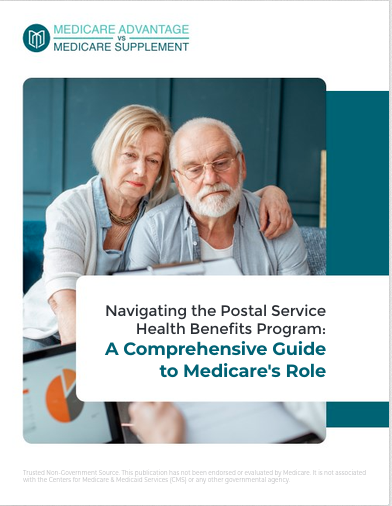Key Takeaways:
-
Medicare Supplement (Medigap) plans in 2025 remain a solid choice for those prioritizing predictable healthcare costs and broad provider access, despite competition from Medicare Advantage plans.
-
Understanding your healthcare needs, budget, and preferred level of coverage is critical to making an informed decision between Medigap and Medicare Advantage.
Navigating the Options: Medigap vs. Medicare Advantage
Deciding between a Medigap plan and a Medicare Advantage plan can feel overwhelming, especially with changes in Medicare for 2025. Each option has its pros and cons, and the right choice depends on your unique circumstances. Let’s break down the key differences and explore why Medigap plans may still be the right fit for certain beneficiaries.
What Are Medigap Plans?
Medigap plans are supplemental insurance policies designed to fill the “gaps” in Original Medicare (Parts A and B). These gaps include deductibles, copayments, and coinsurance. By covering these costs, Medigap plans help you manage out-of-pocket expenses and reduce financial uncertainty.
Highlights of Medigap Plans
-
Predictable Costs: You’ll pay a monthly premium for your Medigap plan, but your out-of-pocket costs for medical services are generally minimal.
-
Freedom of Choice: You can visit any doctor or hospital nationwide that accepts Medicare, without worrying about networks.
-
Standardized Coverage: Plans are standardized across the country, so a Plan G in Texas offers the same benefits as a Plan G in Florida.
What Are Medicare Advantage Plans?
Medicare Advantage (Part C) plans are an alternative to Original Medicare. These plans are offered by private insurance companies and include all the benefits of Parts A and B, often bundled with additional benefits like vision, dental, or prescription drug coverage.
Highlights of Medicare Advantage Plans
-
Low Initial Costs: Many plans feature low premiums, but out-of-pocket expenses can add up depending on your usage.
-
Extra Benefits: Advantage plans frequently include services not covered by Original Medicare, such as gym memberships or hearing aids.
-
Network Restrictions: Most plans require you to use specific networks of doctors and hospitals, which could limit your choices.
Key Differences to Consider
When deciding between Medigap and Medicare Advantage, there are several critical factors to evaluate:
1. Cost Structure
-
Medigap: You’ll pay a higher monthly premium but enjoy minimal out-of-pocket costs when accessing care.
-
Medicare Advantage: Lower premiums but higher potential costs for deductibles, copays, and coinsurance. Be mindful of annual out-of-pocket maximums, which cap your spending but can still be significant.
2. Provider Flexibility
-
Medigap: Unlimited provider access within the U.S. as long as the provider accepts Medicare.
-
Medicare Advantage: Restricted to network providers, which may pose issues if you travel frequently or live in multiple locations during the year.
3. Coverage Stability
-
Medigap: Plans are standardized and do not change annually.
-
Medicare Advantage: Plan benefits and provider networks may change year to year, requiring you to review your plan annually.
4. Additional Benefits
-
Medigap: Focuses strictly on covering medical expenses; no extra perks like dental or vision.
-
Medicare Advantage: Often includes additional perks, but these may vary widely between plans.
Changes to Medigap Plans in 2025
While Medigap plans remain largely consistent, here are some notable updates for 2025:
-
Standardized Benefits: The structure of Medigap plans hasn’t changed, maintaining uniformity across states.
-
Enrollment Rules: The Medigap Open Enrollment Period still occurs when you first enroll in Part B, typically at age 65. Outside this window, acceptance is not guaranteed and may depend on medical underwriting.
-
Premium Adjustments: Medigap premiums often increase yearly, so it’s essential to factor these changes into your long-term budget.
Medicare Advantage Updates in 2025
Medicare Advantage plans continue to evolve, offering new features and adjustments. Here are key highlights for 2025:
-
Prescription Drug Costs: The new $2,000 cap on out-of-pocket Part D expenses applies to both Medicare Advantage and standalone Part D plans, providing significant financial relief.
-
Plan Offerings: Expect slight adjustments in plan availability and coverage, as private insurers adapt their offerings.
-
Network Changes: Provider networks may shift, requiring you to double-check your preferred doctors’ participation.
Who Benefits Most from Medigap Plans?
Medigap plans are ideal for beneficiaries who:
-
Prioritize Nationwide Coverage: If you frequently travel or live in multiple states, the unrestricted access to providers can be a game-changer.
-
Value Predictable Costs: The consistent monthly premiums and minimal out-of-pocket expenses make budgeting easier.
-
Have Chronic Health Needs: If you expect frequent doctor visits or hospital stays, Medigap’s coverage of deductibles and coinsurance can save you money over time.
Who Benefits Most from Medicare Advantage Plans?
Medicare Advantage plans may be a better fit for beneficiaries who:
-
Prefer Low Monthly Premiums: If you’re healthy and don’t anticipate high medical costs, the lower upfront costs of Advantage plans can be appealing.
-
Appreciate Extra Benefits: The inclusion of dental, vision, or wellness programs adds value for those who use these services.
-
Are Comfortable with Networks: If your preferred providers are within a plan’s network, the limitations may not be a concern.
Making the Choice: Medigap or Medicare Advantage?
Choosing between these two options comes down to evaluating your needs and priorities. Here are some practical tips to guide your decision:
1. Assess Your Healthcare Needs
Consider your current health status and anticipated medical expenses. If you expect frequent care, Medigap’s comprehensive coverage might be worth the higher premiums.
2. Review Your Budget
Look beyond premiums. Calculate potential out-of-pocket costs for deductibles, coinsurance, and copays to understand the full financial picture.
3. Consider Your Lifestyle
If you travel often or split your time between multiple residences, Medigap’s nationwide coverage may offer the flexibility you need.
4. Compare Enrollment Timelines
Medigap enrollment is limited, whereas you can switch Medicare Advantage plans during the Annual Enrollment Period (October 15 – December 7).
5. Use Decision-Making Tools
Medicare’s Plan Finder tool can help you compare costs and coverage for both Medigap and Medicare Advantage plans.
Are Medigap Plans Still Worth It in 2025?
Despite the growing popularity of Medicare Advantage, Medigap plans continue to offer unmatched stability and flexibility. For those who prioritize broad access to providers and predictable healthcare costs, Medigap remains a strong contender.
However, if you value additional benefits and are comfortable with network restrictions, Medicare Advantage plans can provide comprehensive coverage at potentially lower costs.
Ultimately, the decision is deeply personal and should align with your financial situation, health needs, and lifestyle preferences.
The Choice is Yours: Aligning Coverage with Your Needs
With the healthcare landscape evolving, staying informed is critical. Whether you choose a Medigap plan or a Medicare Advantage plan, understanding the benefits and limitations of each option will help you make a choice that supports your health and peace of mind.










